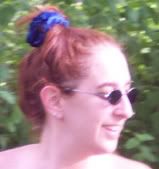Written by: Andrea Wang and Jason Chin
First line: We are in the old Pontiac, the red paint faded by the years of glinting Ohio sun, pelting rain, and biting snow.
Why you should read this book: A little girl, the American daughter of Chinese immigrants, resents being made to harvest wild watercress out of a ditch with her family—it's hard enough being poor without worrying that someone you know might see you picking weeds in the mud by the side of the road! Although her parents are overjoyed to experience this taste of home, the narrator refuses to touch the delicacy, until her mother, sensing the trouble, shares her own troubling history. With a new understanding of what this food means to her family, the child finds that the watercress is delicious and that she sees her parents in a new light, understanding what they went for before she was born in order for her to grow up as an American kid who had the ability to refuse any food.
Why you shouldn't read this book: Your parents controlled you with food.
